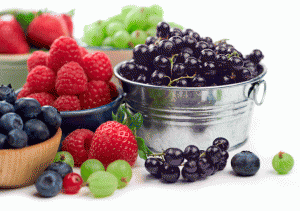By Gaye Levy
Guest writer for Wake Up World
Buddha (c. 563 BC to 483 BC) is credited with saying:
“To keep the body in good health is a duty, otherwise we shall not be able to keep our mind strong and clear.”
Now it seems to me that if the world were to drastically change in a TEOTWAWKI situation, having a strong and clear mind would be paramount to survival. And yet, as we plan for such an event, how much of our effort is spent on the matter of good health in the here and now? Not as much as we could and should I say.
The reasons are simple. It is just easy to continue to do things the way we always have. Some chips with our burger, a nice piece of pie for desert, and oh yeah, what about the can of soda to wash it down?
I have always been interested in diet and nutrition, most likely because I was an overweight child and have struggled to maintain trim my entire life. For the most part I have won the battle but now I also face the dreaded prospect of aging, and am acutely aware that what goes in can materially affect both how I look and how I feel as I get older.
Just What are Antioxidants?
[pro_ad_display_adzone id=”110028″]
For years, the mention of the term “antioxidants” sent me running. Perhaps it was the “anti” which denoted a negative connotation or perhaps it was simply confusion since the term was applied not only to food products and plants but to skin care, cosmetics and industrial chemicals as well.
I finally came around, however, and jumped on the knowledge bandwagon a few years back, recognizing that antioxidants were a good thing. But why? And what the heck are they, anyway.
According to Wikipedia:
An antioxidant is a molecule that inhibits the oxidation of other molecules. Oxidation is a chemical reaction that transfers electrons or hydrogen from a substance to an oxidizing agent. Oxidation reactions can produce free radicals. In turn, these radicals can start chain reactions. When the chain reaction occurs in a cell, it can cause damage or death to the cell. Antioxidants terminate these chain reactions by removing free radical intermediates, and inhibit other oxidation reactions.
In plainer English, antioxidants are dietary substances can prevent damage to your body cells or repair damage that has already been done. They work by slowing down or even preventing damage to the cells from the bod-boy free radicals that are created by oxidation.
Using an example provided by the Academy of Dietetics and Nutrition (formerly the American Dietetic Association), let me describe what happens to an apple when you cut in to it. Slice the apple, expose it to air (oxygen) and it turns brown. But, and this is the key, dip it in some orange juice or lemon juice which contains the antioxidant Vitamin C, and the apple stays apple-colored, or white.
Examples, Please
Several of the top antioxidants include:
- Beta-carotene: This antioxidant is believed to be helpful in helping prevent heart disease and cancer. Beta-Carotene is found in bright green, orange and yellow produce, including carrots, sweet potatoes, pumpkins, apricots, cantaloupe, mango, papaya, red bell pepper, spinach, kale, turnip greens and broccoli.
- Vitamin C: It helps protect and fight against infections, promotes the absorption of iron and helps produce thyroxin (a hormone that regulates metabolism and body temperature). Look for Vitamin C in organic guava, papaya, red and green peppers, kiwi, orange and grapefruit juice, broccoli, cantaloupe, potatoes, tomatoes, cabbage, strawberries, mustard and turnip greens.
- Vitamin E: This protects the white blood cells, which helps keep the immune system in top shape. Vitamin E is found mostly in vegetable oils. Look for it in corn oil, olive oil, peanut oil, sesame seed oil, soybean oil, sunflower oil, almonds, wheat germ, nuts, seeds, and olives.
- Selenium: Selenium is incorporated into proteins to make selenoproteins, which are important antioxidant enzymes. According to the National Institutes of Health, the antioxidant properties of selenoproteins help prevent cellular damage from free radicals. Good sources of selenium include brazil nuts, sunflower seeds, chicken and turkey breast meat, eggs, and brown rice.
Enter in to the World of Plants
The good news is that the plant world contains thousands of types of antioxidants and that when these plants are consumed, these defensive antioxidant plant molecules are passed on to the people who eat them. This means that lucky for us, antioxidants are easy to include in our diets.
Brightly colored fruits and veggies are the stars in this arena, with fruits taking the lead. Berries of all types head the list along with plums and cherries. Then come the green and red vegetables such as broccoli, spinach, red cabbage and green peppers. But honestly, there is no bad fruit and no bad vegetable when it comes to antioxidants. The only thing bad is the person who refuses to eat them.
Of course, it is well and good to eat fruits and vegetables but it is equally important to make sure that they are prepared correctly. No boiled or microwaved mish-mash please. To retain the most value, veggies should be lightly steamed or stir-fried.
More Sources of Antioxidants
In addition to fruits and veggies, herbs and spices (try cinnamon, turmeric, cloves and oregano) and nuts and seeds with skins are antioxidant all stars.
Lets talk about the herbs and spices a moment. According to Los Angeles-based dietitian Vandana Sheth, RD, CDE, a spokesperson for the Academy of Nutrition and Dietetics.
“Most people think of antioxidants as coming strictly from foods like fruits and vegetables, dark chocolate, or red wine, but many herbs and spices not only provide flavor but also a big bang of antioxidants. A little bit goes a long way.”
So, for example, a single 1/2 teaspoon of ground clove contains more antioxidants than 1/2 cup of blueberries and a teaspoon of oregano contains as many antioxidants as an entire cup of sweet potatoes. Certainly this is something to think about as we store spices and condiments for long term storage.
But there are other big winners in the antioxidant camp. Red wine, chocolate and yes, coffee and espresso.
According to the Mayo Clinic, the antioxidants in red wine are called polyphenols and these polyphenols may help protect the lining of blood vessels in your heart. Although they are careful to use the word “may”, the Mayo Clinic as well as other credible authorities claim that resveratrol is the key ingredient in red wine that helps prevent damage to blood vessels, reduces “bad” cholesterol and prevents blood clots.
When it comes to chocolate, dark chocolate is the celebrity when it comes to antioxidants. Dark chocolate is loaded with flavonoids, a type of antioxidant that has been shown in medical studies to offer protection to the vascular system, heart and brain. Of course there is the waistline to consider, but a tiny piece of dark chocolate is probably going to do you more good than harm. For more information on the value of chocolate in your diet, check out the article Heart-Health Benefits of Chocolate Unveiled which was written by the well-respected Cleveland. Clinic.
And finally, there is coffee. Going back once again to the Mayo Clinic, here is what they say:
A “cup of joe” has up to 2,000 different components, including micronutrients such as magnesium, potassium, niacin and vitamin E. Among coffee drinkers, coffee may be the largest food source of antioxidants — substances that protect cells from the damage caused by unstable molecules called free radicals.
What about Organic Fruits and Vegetables
No one will dispute the fact that pesticides can cause health problems, such as birth defects, nerve damage, cancer, and other effects that might occur over a long period of time. However, these effects depend on how toxic the pesticide is and how much of it is consumed. This is especially true when it comes to children.
Connecting the dots with the oxidation process and the development of free radicals, it makes sense that in addition to providing antioxidant benefits, consuming organic fruits and vegetables may further foster long term good health by diminishing the effects of pesticide residue.
Now I know that in many areas, including my own, the cost of organic food products may be more than double the non-organic items. There are three choices left: grow your own, be selective and choose only non-organic items that are least likely to harbor pesticide residues, or a combination of the two.
The produce types least likely to be toxic are those items with thick skins such as onions, avocados, sweet corn, pineapples, mango, asparagus, peas, kiwi fruit, bananas, papaya, broccoli and cabbage. Produce with thin (or non-existent) skin is most likely to be contaminated with pesticide residues.
On the other hand, there is a strong likelihood that peaches, apples, celery, berries, lettuces, spinach and potatoes will be contaminated with pesticide residue. If you can not afford organic, be sure to wash these items well before consuming. We actually scrub our potatoes with soap and water!
The Antioxidant Grocery List
I make no apologies for admitting that I enjoy the antics of Dr. Oz. A lot of what he does is wrapped around a bubble of hype and entertainment (think reality show) but his show also includes a lot of useful information, most of which is credible and well documented.
A while back he published the following Antioxidant Grocery list which can also be printed out and used as a shopping list.
The Final Word
Where as beans, bullets and band-aids are the mantra of the prepper community, so is good health. After all, you can have a three year food supply and a lifetime stash of ammunition, but if you are too feeble to eat and too weak to defend yourself, all of those great preps will go to waste.
It is far better to plan for a healthy body along with the rest of your preparedness tasks. Focus on eating more of a plant based diet with the emphasis on brightly colored produce. And don’t forget about that nightly glass of rid wine. And by the way, how about a small handful of almonds with that wine?
Enjoy your next adventure through common sense and thoughtful preparation!
Gaye
About the Author
Gaye Levy lives and teaches the principles of a sustainable, self-reliant and stylish lifestyle through emergency preparation and disaster planning. She does this through her website at BackdoorSurvival.com, an online preparedness blog that provides lifestyle tools, tips, and thoughts to guide you through the back door of life in the 21st century. With an emphasis on prepping and survival, she writes about and shares practical, thoughtful, and inspirational tools for survival in uncertain times.
Backdoor Survival is currently listed on the Survival Top 50. In addition, Gaye is a frequent guest on the Preparedness Radio Network and the soon to be author of a book on 21st century preparedness. Also known as SuvivalWoman, Gaye speaks her mind and delivers her message with optimism and grace, regardless of mayhem swirling around us.
You can find Gaye through her website at Backdoor Survival, on the Backdoor Survival Page on Facebook, and as Survival Woman on Twitter.
[pro_ad_display_adzone id=”110027″]







